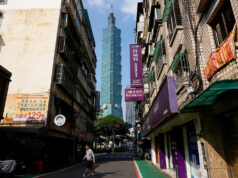DBCC cuts GDP outlook on pandemic impact
By Beatrice M. Laforga
Reporter
THE government now expects gross domestic product (GDP) to contract by 5.5% this year, lowering the outlook amid the widening economic fallout from the coronavirus disease 2019 (COVID-19) pandemic.
The Development Budget Coordination Committee (DBCC) on Thursday said it further downgraded its GDP projection to -5.5% this year, from the -2% to -3.4% forecast range penciled in on May 27 “in view of updated indicators on the impact of the COVID-19 pandemic on tourism, trade, and remittances throughout the year.”
The DBCC statement was released after the statistics agency announced GDP contracted by 16.5% in the second quarter from a year ago, the worst on record since the government’s quarterly GDP data going back to 1981.
Economic managers also slashed growth projections for 2021 and 2022 to 6.5-7.5%. It earlier forecast 8-9% growth for 2021, and 6-7% growth for 2022.
The DBCC adopted the revised macroeconomic assumptions on July 28 when it hiked the proposed P4.506-trillion budget ceiling for 2021.
With an P18-trillion economy, the Philippines lost around P1.5 trillion for every month of strict lockdown in the second quarter, Acting Socioeconomic Planning Secretary Karl Kendrick T. Chua said in an online briefing.
“[The latest GDP forecast] incorporates already the effect of this MECQ (two-week modified enhanced community quarantine) which we hope to maximize this two-week period to enhance our healthcare system so we can provide more boost to consumer confidence in the remaining 5 months of the year so we arrive at the GDP we projected” Mr. Chua said.
The government placed Metro Manila under MECQ until Aug. 18 in an effort to control the rising number of COVID-19 infections. On Thursday, the Health department reported 3,561 new coronavirus cases, bringing the total to 119,460.
ASEAN+3 Macroeconomic Research Office (AMRO) also cut its 2020 GDP projection for the Philippines to -6.6%, from the earlier forecast of -3.8%. If realized, the Philippines will be the second worst-performing country in ASEAN in 2020, following Thailand (-7.8%). This is also worse than the regional average of a 2.6% contraction and ASEAN+3’s projected flat growth.
AMRO also slashed the estimate for next year to 6.5% from the 7.4% penciled in late-April. However, this is still higher than the projected 5.7% and 6% growth for ASEAN and ASEAN+3 next year, respectively.
“A resurgence of the COVID-19 is taking place not only in the Philippines but also in other countries in the region, signaling a serious impact on economic recovery in the second half of this year and 2021. A second or third wave will dampen the speed and weaken the strength of the recovery, posing a significant risk to medium-to-long term growth prospects,” Zhiwen Jiao, AMRO’s country economist for the Philippines, said in an e-mailed response to questions.
REVISED ASSUMPTIONS
The DBCC also lowered its inflation rate assumption for the year to 1.75-2.75% from the previous 2-4% range. It maintained the 2-4% inflation forecast for 2021-2022.
The economic team also downgraded the output forecast for this year’s goods exports and imports on expectations of a severe economic downturn.
It now expects goods exports to contract by 16%, from the earlier projection of -4% but maintained the 5% growth estimate for 2021-2022. Goods imports, on the other hand, are expected to slide 18% this year from its previous forecast of -6% but kept the 8% projection for the next two years.
Remittances will drop by five percent this year before a return to the “normal” annual growth rate of 4% in 2021-2022, the DBCC said.
It also raised the estimated price of Dubai crude oil this year to $35-45 per barrel from $23-38 each previously. The peso is now seen to settle between P50 and P52 against the greenback this year, a narrower range compared to the P50-54 per dollar estimate in March.
The estimated disbursements for the year were also revised upward, while projected overall revenues were slashed as economic contraction deepens.
The DBCC estimated this year’s budget deficit ceiling at 9.6% of GDP, from 8.4% previously. The budget deficit ceiling for 2021 and 2022 was revised to 8.5% (from 6.6%) and 7.2% (from 5%), respectively.
Government revenues will be lower at P2.52 trillion this year, which is 13.4% of GDP, compared to the earlier estimate of P2.61 trillion. This was attributed to expectations of a deeper economic slump and the estimated P42 billion in foregone revenues when the corporate income tax is slashed to 25% from 30% this year.
Considering the additional spending of P140 billion under the Bayanihan to Recover as One (Bayanihan II) bill, this year’s estimated disbursement is at P4.34 trillion which represents 23% of GDP. This is 5.9% higher than the original P4.1-trillion spending plan.
The proposed Corporate Recovery and Tax Incentives for Enterprises (CREATE) Act that will lower corporate income tax and streamline incentives is among the stimulus bills being pushed by the economic team.
“Despite these adjustments in deficit spending, the DBCC is confident that the National Government’s debt will be kept at a sustainable and responsible level, within the 60% internationally-recommended debt threshold, by 2022,” it said.



